Levels of Instruction by James Nakayama Sensei
1) Traditional, and most common, is to just demonstrate a technique. This type of teaching has few restrictions that makes it possible for the student to explore the technique and adjust it to their individual nature, freeing them from formalized movement. The drawback is, without proper feedback, it?s difficult to recognize movement flaws, even for students who have proper training in mechanics. This ultimately leads to ingraining movements that become difficult to correct as time goes by.
2) Teaching forms by rote allows the student to see and hear what steps need to be done, and to be able to repeat the steps, making learning easier. To do this, the instructor needs to understand what the footwork and body movement of a technique are, and to be able to present it in an organized and systematic methodology suitable to the level of the students.
3) It?s important for the instructor to understand each step of a technique thoroughly. For the instructor to only be able to demonstrate step-by-step movement of a technique is not always adequate and efficient, because this often requires the student to memorize multiple, and unfamiliar movements. To alleviate this problem, an instructor must be able to explain the rationale of why certain setups and movements are done. If the student understands why something is done, then it becomes easier to remember.
4) An instructor needs to be able to see details and describe them to students. Step-by-step repetition is not enough to teach all the details that make a technique efficient. After the gross movements are learned, students then apply what they?ve learned through free practice. During this free practice, the students who are not grounded in proper mechanics will have to be reminded of basic principles and mechanics. Students who have good mechanics will need guidance in concepts of connection, extension, flow, rhythm, kuzushi (balance breaking) etc. It is the up to the instructor to bring these points to the attention of the students.
5) For an instructor to be able to see and point out corrections to a student is not always enough. Students may understand that they?re doing something wrong, but that doesn?t mean they will know how to correct it. An instructor must be able to address individual specific problems by demonstrating how to make corrections. Because there are innumerable and unique situations that need to be addressed, an instructor needs to have a depth of understanding that gives birth to innovation. This innovation leads to creating solutions to specific areas of training.
Nakayama?Sensei?is the?Shibucho?(Branch Leader) of the AAA Western Region, in charge of the Regional Test Committee and Black Belt Association. He is a member of the AAA National Teaching Committee, and the?Aikido?Association International (AAI) Teaching Committee.









